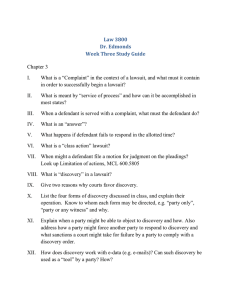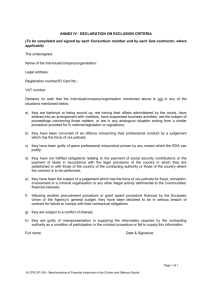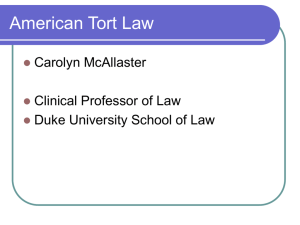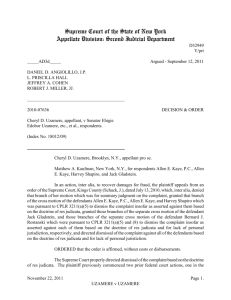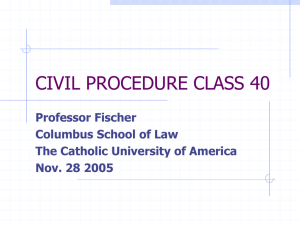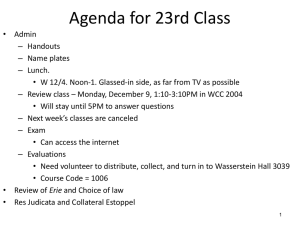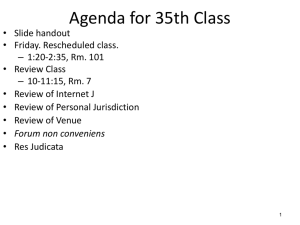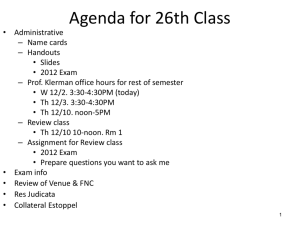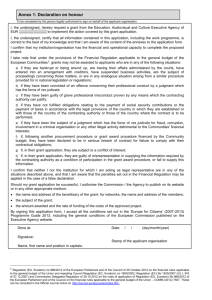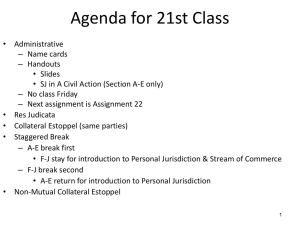Slides in Microsoft Word Format
advertisement
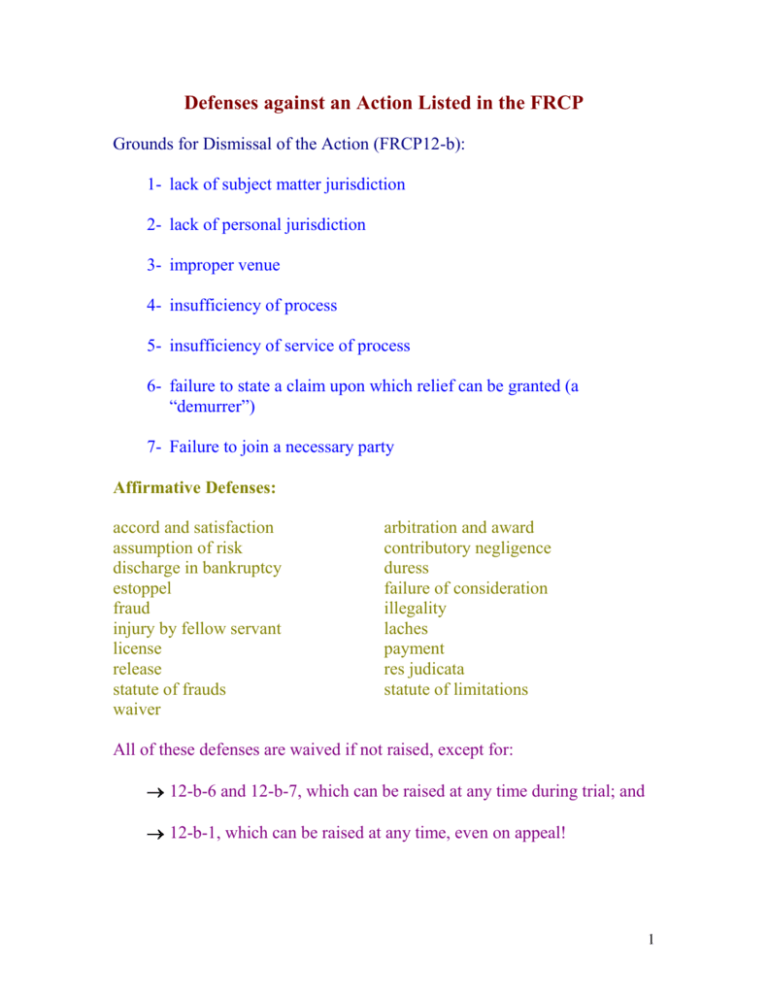
Defenses against an Action Listed in the FRCP Grounds for Dismissal of the Action (FRCP12-b): 1- lack of subject matter jurisdiction 2- lack of personal jurisdiction 3- improper venue 4- insufficiency of process 5- insufficiency of service of process 6- failure to state a claim upon which relief can be granted (a “demurrer”) 7- Failure to join a necessary party Affirmative Defenses: accord and satisfaction assumption of risk discharge in bankruptcy estoppel fraud injury by fellow servant license release statute of frauds waiver arbitration and award contributory negligence duress failure of consideration illegality laches payment res judicata statute of limitations All of these defenses are waived if not raised, except for: 12-b-6 and 12-b-7, which can be raised at any time during trial; and 12-b-1, which can be raised at any time, even on appeal! 1 Third Party Practice Joinder of claims: A plaintiff can sue a defendant for any number of different causes of action in the same lawsuit A defendant in a civil action can “counterclaim” against a plaintiff for any claim at all, even one unrelated to the lawsuit If there is a subject matter jurisdiction problem with the second claim, it can still be allowed in as “supplemental jurisdiction” if it arises from the same transaction or occurrence as the original claim. Joinder of parties: (additional parties bringing brought into the suit) Permissive: Addition claim arises out of the same transaction or occurrence as a claim already involved in the lawsuit. Necessary: Additional party MUST be joined when: (1) the party must be present in order to award “complete relief”, or (2) the party has an interest in the action so that his or her interest cannot be represented and protected without that party appearing in the lawsuit. This can be by: Third party complaint: The defendant (the third party plaintiff) suing (impleading) a third party (the third party defendant) Cross-claim: Parties already in the case sue each other Interpleader: A party that has property that more than one party laid a claim to; instead of giving it to one party and risking double liability, the party can bring an interpleader action. Intervention: When a nonparty seeks to join a lawsuit to protect his or her rights. 2 Impleader Diagram 3 Res Judicata and Collateral Estoppel These rules make sure that the same case or issue is not litigated twice! Res Judicata (claim preclusion): This applies to bar a cause of action from being heard in court, when: 1) the same claim was or could have been raised in an earlier proceeding; The “transaction or occurrence” test is used for this: if the previous action involved the same “transaction or occurrence” as the later action, the later one could be barred by res judicata 2) the parties are the same parties that were represented in the earlier action (including subsidiaries, successors and parties in privity with the previous parties); AND 3) the original claim was settled by a final judgment on the merits (not based on a technicality such as defective service of process or lack of jurisdiction Collateral Estoppel (Claim Preclusion) This applies when a court has already decided an issue between these parties and the same issue comes up in the context of a different claim. The former action can preclude the re-litigation of the same issue. Same party and final judgment on the merits requirements as with R.J. apply, PLUS 1) The new issue must be identical to the one already litigated 2) The issue must have been actually litigated (not just “could have been” litigated) 3) The issue must have been necessarily decided in the first action (its resolution must have been essential to the decision of the first action) 4

